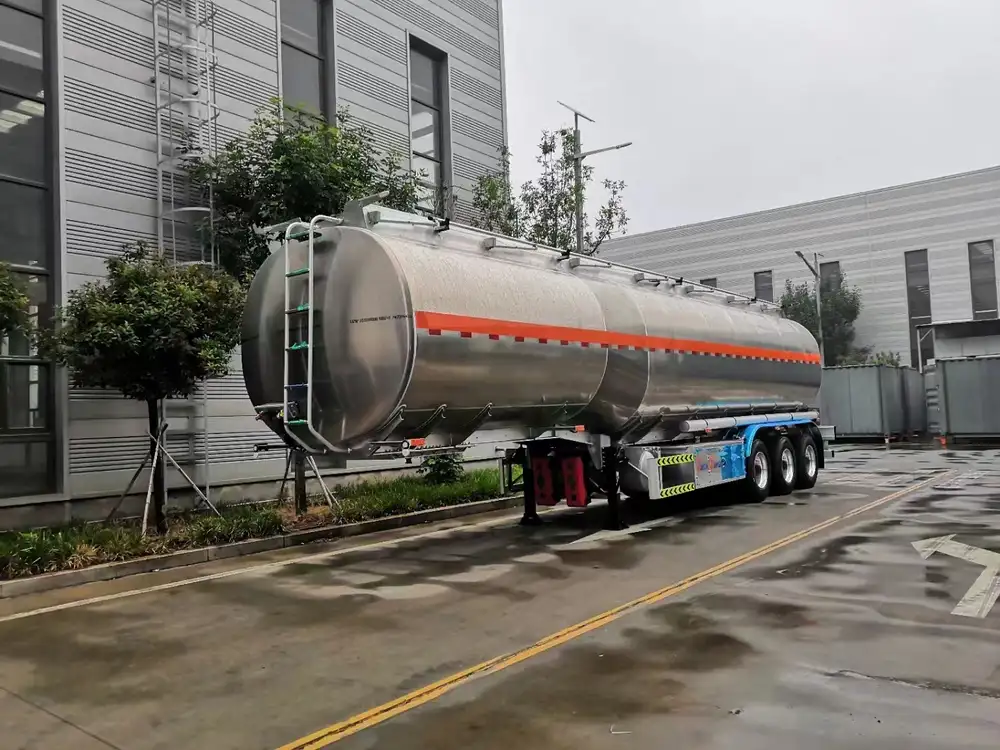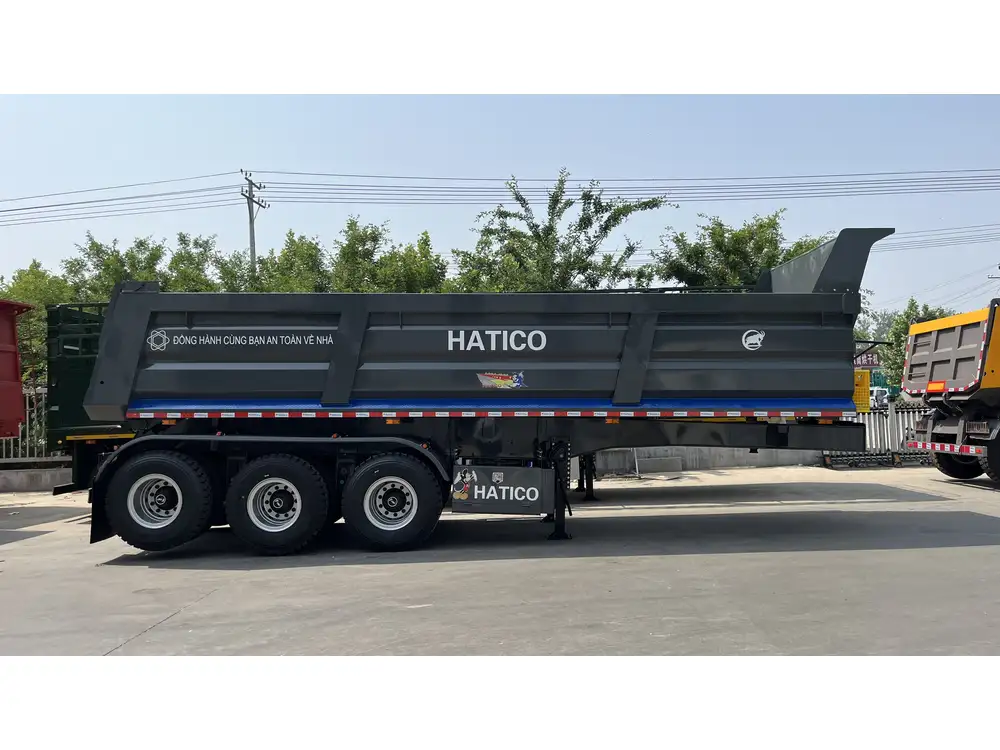When it comes to roofing projects, whether a residential makeover or a commercial overhaul, the choice of a dump trailer can make a significant difference in efficiency, productivity, and overall project success. The question “What size dump trailer is best for roofing?” often arises among contractors, roofers, and DIY enthusiasts, seeking the ideal balance between capacity and maneuverability. This comprehensive guide systematically explores the various considerations that determine the most suitable dump trailer size for roofing tasks.
Understanding Dump Trailer Dimensions
To make an informed decision, it’s crucial to comprehend the various specifications of dump trailers. They come in multiple sizes, typically categorized by their payload capacities, which dictate how much weight they can carry. Below is a detailed breakdown of the sizes available:
| Trailer Size (in cubic yards) | Payload Capacity (in tons) | Best Uses |
|---|---|---|
| 3 – 5 yds | 1 – 2 tons | Small roofing jobs like shed or garage roofs |
| 6 – 10 yds | 2 – 4 tons | Residential roofing projects, including larger homes |
| 11 – 14 yds | 4 – 6 tons | Large residential or small commercial projects |
| 15 – 20 yds | 6 – 10 tons | Heavy-duty commercial jobs, large buildings, or multiple-unit complexes |
Key Considerations When Selecting Size

1. Project Size and Scope
It is paramount to evaluate the size of your roofing project. For smaller roofs—like those on sheds, garages, or small homes—a 3 to 5-yard dump trailer may suffice. However, for larger residential roofs or full commercial projects, opting for a 11 to 20-yard trailer is advisable. Understanding the project specifics will directly guide your choice.
2. Load Weight and Material
The load capacity is not merely a reflection of the physical dimensions but also the weight the trailer can safely transport. Roofing materials can be heavy; shingles, wood, and other debris can quickly exceed lower payload limits. Here’s a quick reference on the weight of common roofing materials:
| Material Type | Weight per Cubic Yard |
|---|---|
| Asphalt Shingles | 1,200 – 1,500 lbs |
| Clay Tiles | 2,000 – 3,000 lbs |
| Wood Shingles | 1,000 – 1,200 lbs |
Calculating the volume of material you expect to dispose of during the project is essential for determining the required dump trailer size.
3. Frequency of Use
If roofing projects are a regular part of your business, investing in a larger trailer may be advantageous. A larger trailer can manage multiple jobs and larger amounts of debris, thus increasing efficiency and reducing the frequency of trips to the dump.

4. Maneuverability and Accessibility
Consider the environment where the trailer will be used. Larger trailers may present maneuverability challenges, especially in residential areas with narrow streets or tight work sites. If you often work in confined spaces, a smaller trailer might be more practical despite its reduced capacity.
Benefits of Selecting the Right Size
Choosing the appropriate dump trailer size carries significant benefits, including:
- Efficiency in Disposal: A trailer that suits the load requirements leads to fewer trips to the landfill, thus saving time and fuel.
- Cost-Effectiveness: Smaller trailers may seem cheaper, but they can lead to increased labor and transport costs due to trips back and forth.
- Safety: Overloading a trailer can result in unsafe conditions on the road and at the job site. Selecting a trailer with sufficient capacity ensures compliance with weight regulations and more stability.
Recommendations for Specific Roofing Scenarios

1. Residential Roof Replacement
For conventional residential roof replacement, where asphalt shingles are the most common material, a 10-yard dump trailer is typically optimal. This size accommodates an average residential roof without the need for multiple trips.
2. Commercial Roofing Projects
For larger commercial developments, particularly those involving the installation of heavy materials like clay tiles, a dump trailer in the range of 15 to 20 yards is advisable. This size not only maximizes time efficiency but also streamlines labor costs.
3. Specialty Roofing Situations
In cases where unique materials are involved (such as metal roofing panels), perhaps in an intricate architectural design, it’s prudent to analyze the materials’ weights and the project’s complexity.

Environmental Considerations in Dump Trailer Selection
In modern roofing projects, environmental considerations also play a pivotal role. Many areas enforce regulations regarding waste disposal and recycling, which can affect the choice of trailer size. Smaller, more frequent loads may be preferable in regions with strict recycling mandates, while larger trailers could support compliance through greater efficiency.
Practical Tips for Using Dump Trailers in Roofing
- Assess Your Load Regularly: Before loading, develop a systematic approach to estimate the value of the debris to prevent overloading.
- Secure the Load: Always secure your load to comply with safety regulations and prevent accidents. Tarpaulins or netting can be used for safety.
- Choose the Right Hitch System: Ensure that your towing vehicle is appropriate for the trailer’s size and weight. Use a weight distribution hitch for larger trailers to ensure balance and control.
- Know Local Disposal Regulations: Familiarize yourself with the local regulations concerning waste disposal to avoid fines and ensure compliance.
Final Thoughts: Making the Optimal Choice
Ultimately, selecting the right dump trailer size for roofing projects involves understanding the intricacies of your specific project type, material types, and disposal needs. This decision can influence your operational efficiency, cost, and even your compliance with local regulations. Whether you choose a compact trailer for small residential work or a robust, heavy-load trailer for extensive commercial projects, each choice carries weight—quite literally.
To discuss your specific needs or to consult on the best options available for your next roofing endeavor, don’t hesitate to reach out. We understand the complexities of roofing projects, and we’re here to assist with the tools and equipment you need for success. Select wisely—your choice can make all the difference in turning projects from challenging to effortless.



